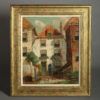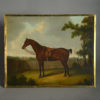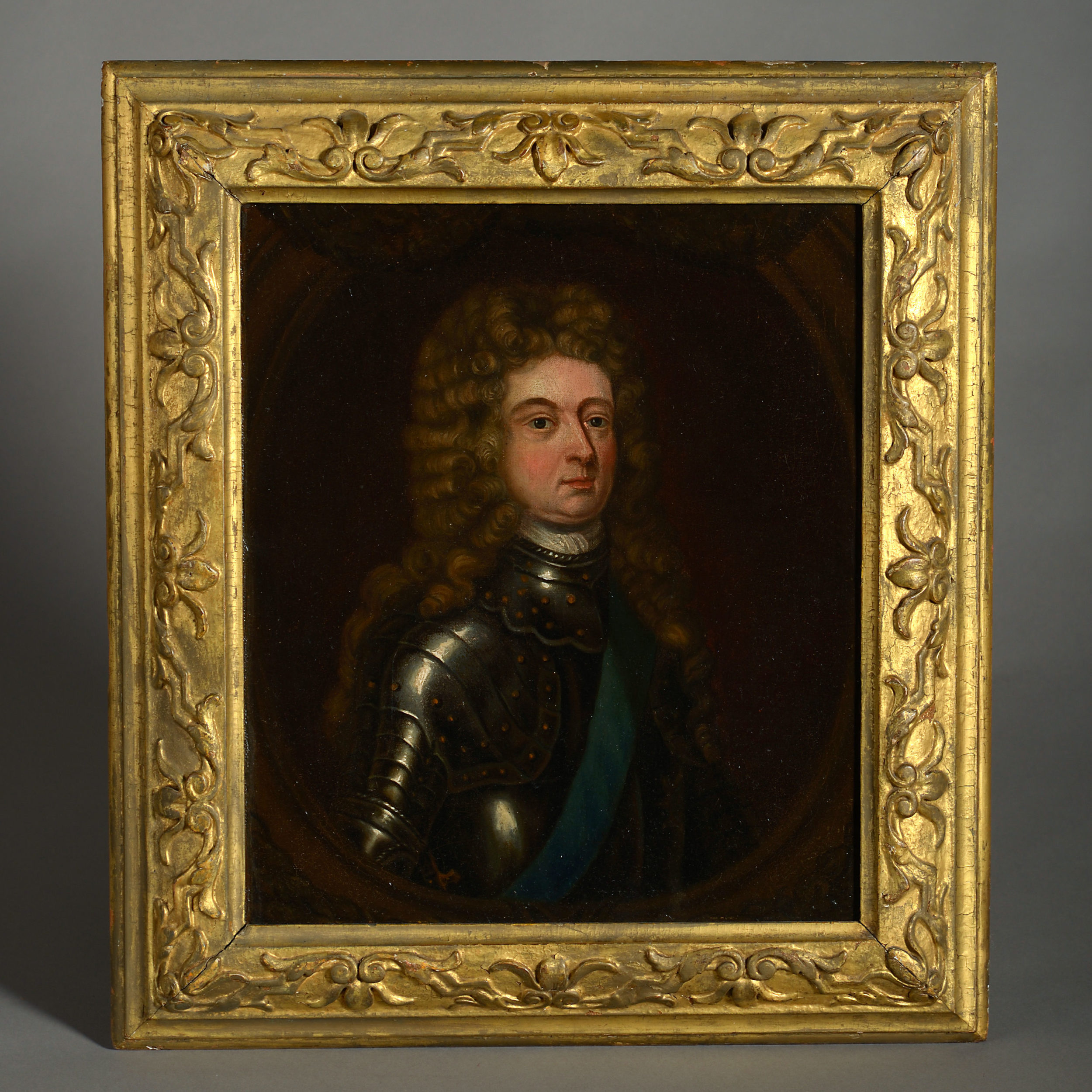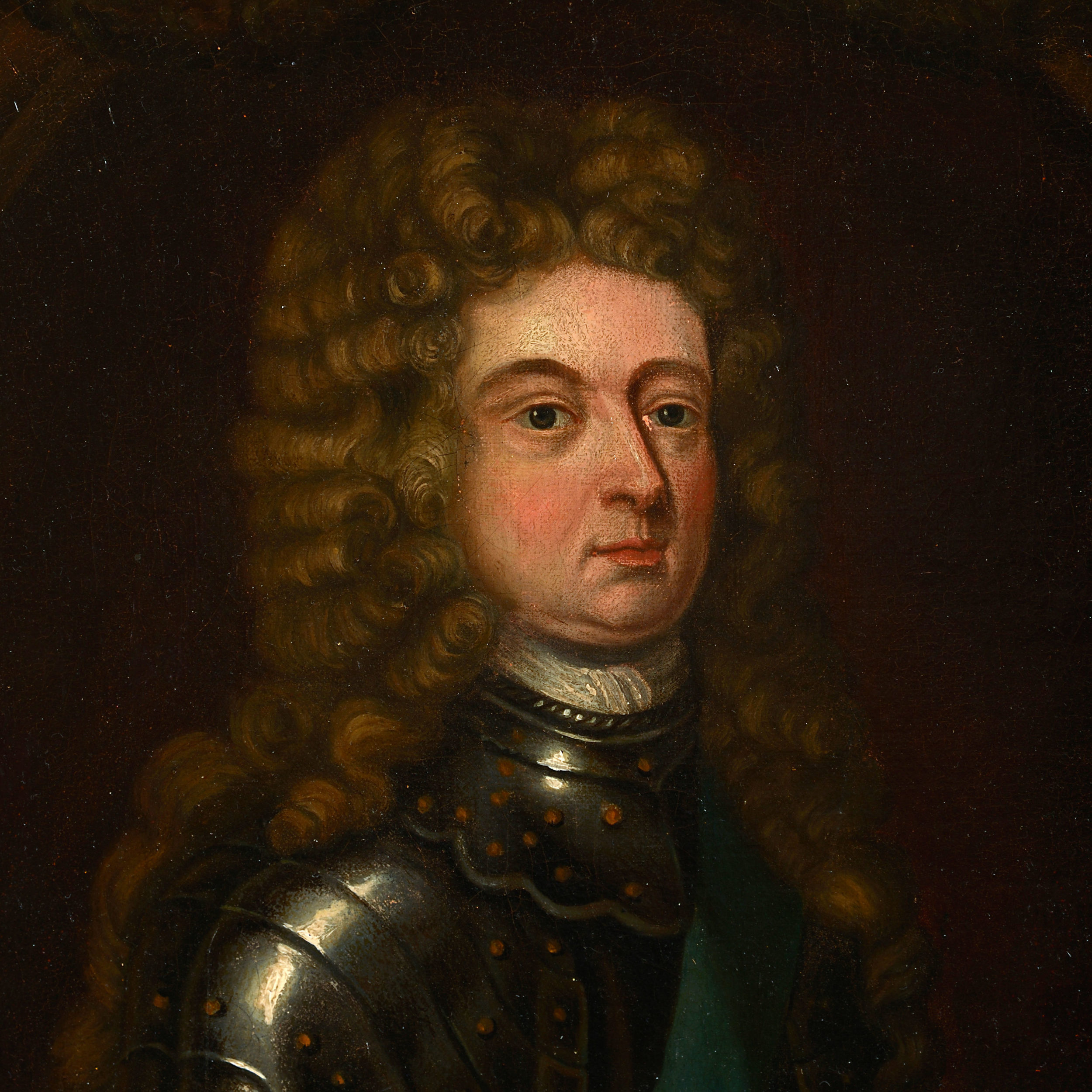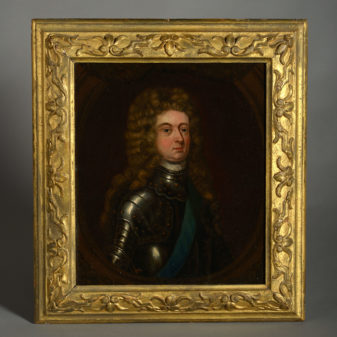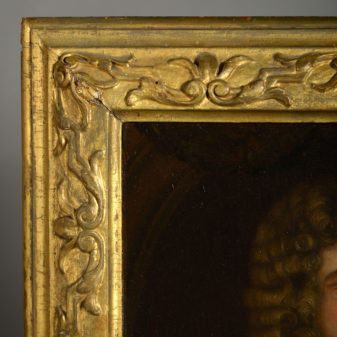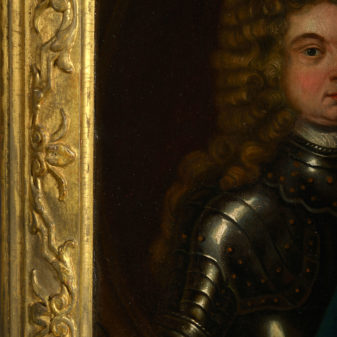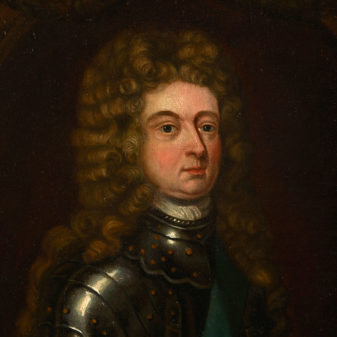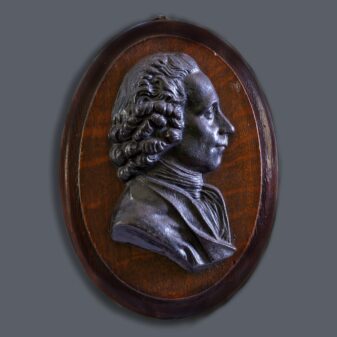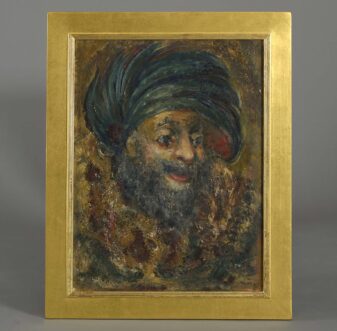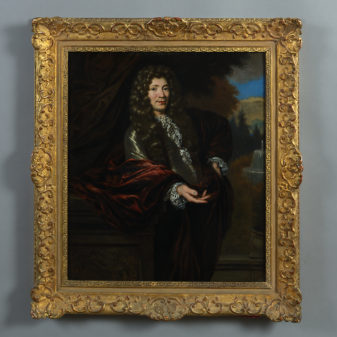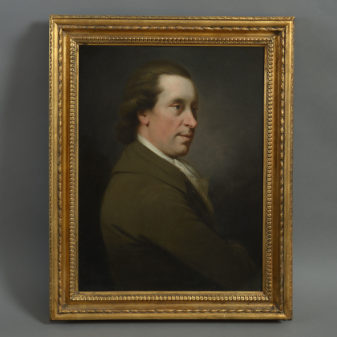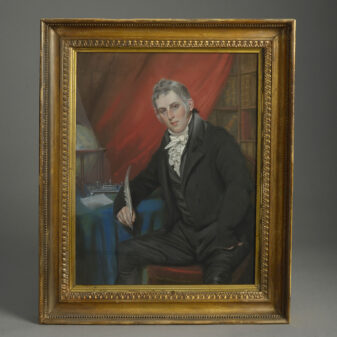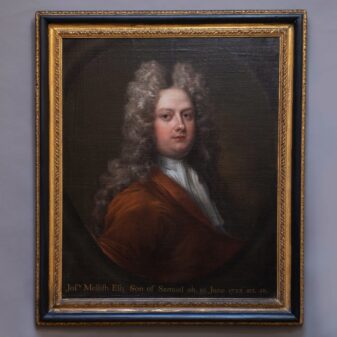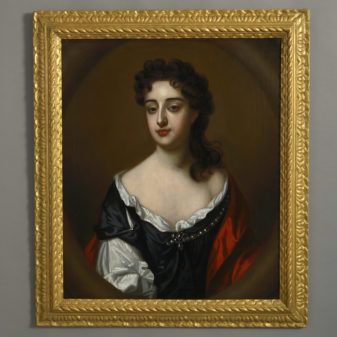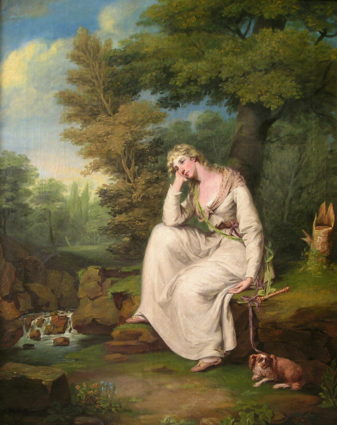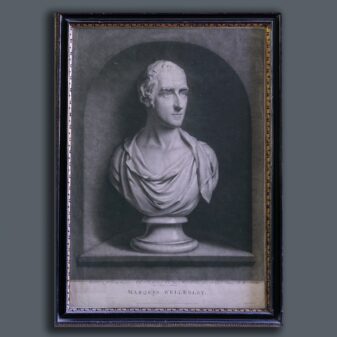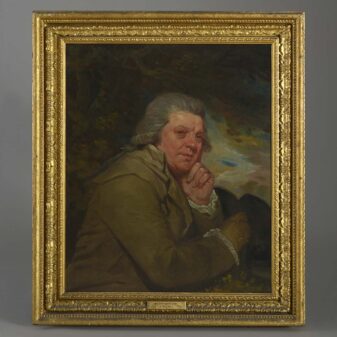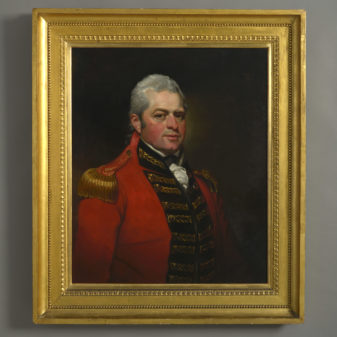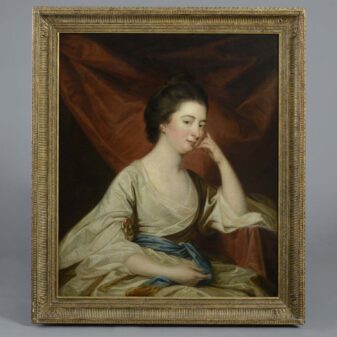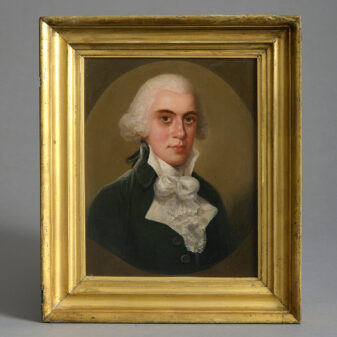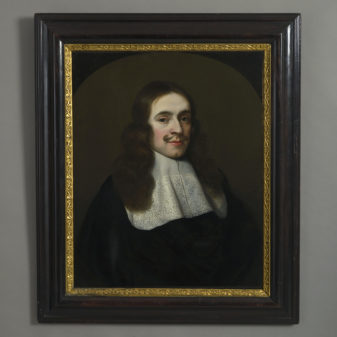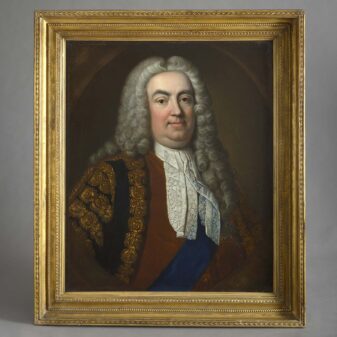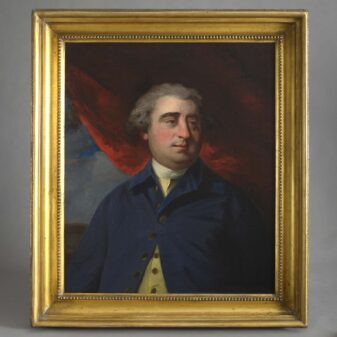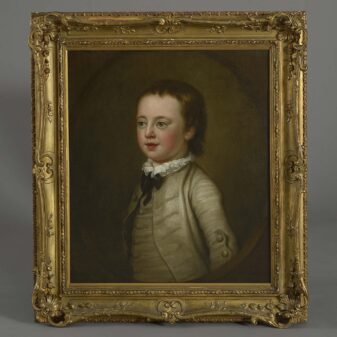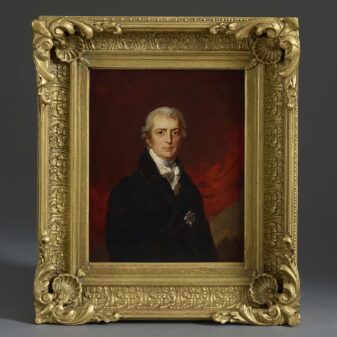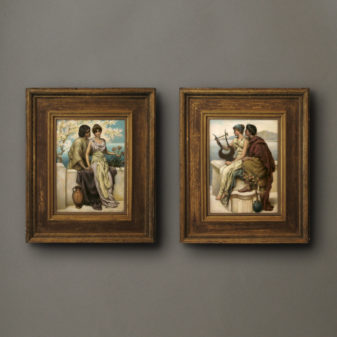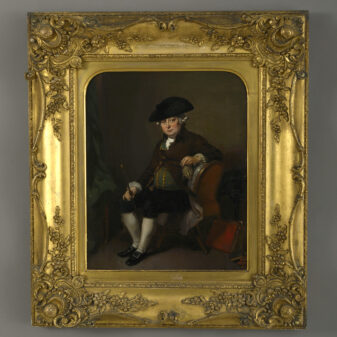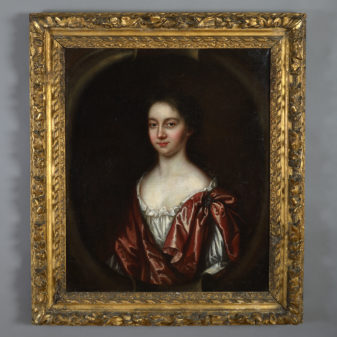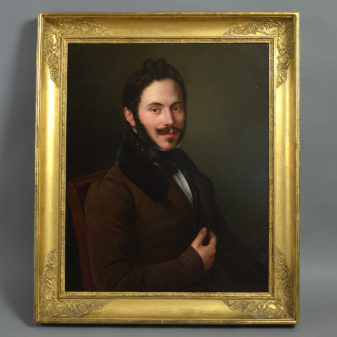Circa 1720 England
Early 18th Century Portrait of John Churchill, 1st Duke of Marlborough
£2,950
SOLD
Height 19 inches (48.26 cm)
Width 16 1/2 inches (41.91 cm)
Depth 2 inches (5.08 cm)
An early 18th century oil on canvas portrait of John Churchill, 1st Duke of Marlborough mounted in a period gilt wood frame.
John Churchill, 1st Duke of Marlborough, was arguably Britain’s finest general. According to one of Britains finest military historians, Richard Homes.’He bore a greater burden, military and political, than any commander before or since and of him alone could it be said that he never besieged a town he did not take, or fought a battle he did not win.’
Moreover, he inflicted upon Louis XIV’s France, the superpower of the day, its first major defeat and almost single-handedly prevented a Bourbon super-state from dominating Europe, thereby laying the foundations for the continental balance of power and Britain’s imperial expansion.
Born in 1650, the younger son of a minor landowner who had backed the losing Royalist side during the Civil War, Churchill was raised in a family that had neither money nor influence. Things improved with Charles II’s Restoration in 1660, but Marlborough never forgot those early years of hardship.
Clever, handsome and affable, he took advantage of his sister Arabella’s relationship with the King’s brother, the Duke of York, to gain an appointment as a royal page and later a commission in the First Foot Guards.
Marlborough’s rapid social and professional advancement owed much to his royal patron. By the time York succeeded his brother as King James II in 1685, Marlborough was already a peer and a lieutenant-general. Yet within three years he had betrayed the Roman Catholic monarch by defecting to William of Orange, husband to James’s daughter Mary, who had invaded England to restore the Protestant Ascendancy (the bloodless coup known as the ‘Glorious Revolution’).Denied the supreme command until Queen Anne’s accession in 1702, thanks to William III’s justified suspicions of his Jacobite sympathies, the 52-year-old Marlborough soon made up for lost time by trouncing a succession of French marshals at the Battles of Blenheim, Ramillies, Oudenarde and Malplaquet.
As commander of British forces, deputy commander of Dutch forces and ambassador extraordinary, his responsibilities ‘immeasurably outweighed those exercised by British commanders-in-chief in the great wars of the 20th century, for he did not simply execute strategy but helped to determine it’.
He was a brilliant tactician who firmly grasped the essentials of the three combat arms, using infantry for firepower, cavalry for shock and artillery to tilt the balance. He had a remarkable eye for ground, and once battle had been joined was always looking to knock his opponent off balance. Like all great captains he knew the importance of ‘solid training’, and no detail of logistics was beneath his attention.
After his death, even Marlborough’s political opponents were forced to acknowledge his achievements, with Lord Bolingbroke honouring his memory ‘as the greatest general, and as the greatest minister that our country, or perhaps any other has produced’. Holmes does not say as much, but one suspect he agrees.
The Duke was depicted by many leading artists of the day including Godfrey Kneller and Micheal Dahl. This fine little representation of him is clearly influenced by these artists works and was probably completed circa 1720.
Dimensions refer to frame.

